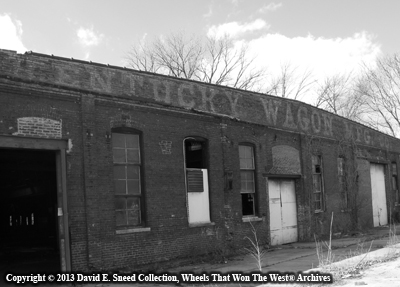Looking down the road a bit, 2014 will mark 150years since the Fish Bros. Wagon Company began building vehicles. While Fish family members eventually splitfrom the Racine firm to create another Fish Bros. company in Clinton, Iowa,both brands can claim roots to 1864. Otherprominent early wagon makers with anniversaries in 2014 include Kentucky WagonCompany (135 years), Winona Wagon Company (135 years), Troy Wagon Company (125years), Florence Wagon Company (125 years), and the Pekin Wagon Company (165years).
One of the earliest vehicle manufactories west ofthe Mississippi, the Mitchell Wagon Company, also celebrates a milestone in2014. Established in 1834 by HenryMitchell, the firm enjoyed a lengthy run well into the 20th centurywith automobiles being a part of their offerings for over two decades. Theirline of horse drawn vehicles included dozens of wagon styles ranging from farm, freight, ranch,business and log wagons. They also built stage wagons, spring wagons,carriages, phaetons, buggies, buckboards, and express wagons. In its heyday, production capacity equaled asmuch as 40,000 vehicles per year.
Withnext year marking 180 years since the founding of the firm, Mitchell brandvehicles continue to be extremely popular with collectors and enthusiasts. Justas the vivid paint and artistically-applied logos once represented a product highlydesired for freighting, staging, cattle drives, and emigrant travels, that samelegacy of leadership survives today; marking a time when good people plus goodideas, long hours, and lots of hard work had a way of opening doors ofopportunity. Thankfully, some thingsnever change.


